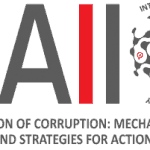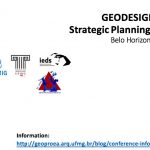This website uses cookies so that we can provide you with the best user experience possible. Cookie information is stored in your browser and performs functions such as recognising you when you return to our website and helping our team to understand which sections of the website you find most interesting and useful.
Beyond the Internet of Things (IoT): Geography of Things (GoT)

Download “Inteligência Geográfica e a Transformação Digital: competências básicas na Gestão do Território”
Conceito-Inteligencia_Geografica_e_Transformacao_Digital.pdf – Baixado 4332 vezes – 608,66 KB
Did you know that you can access the full content of the site in your language? Materials on Digital Transformation, the new 4.0 Revolution, Technology and Geography in Agriculture, Smart Cities and Campus and Teaching. Access now!
A sunny Saturday morning. You resolve to know the new leisure area of the city. You turn on your smartphone, put your fitness bracelet and type the address into your preferred map application. Before leaving, your “personal assistant”, warns you that the traffic is broken. You quickly query the closest bus lines in the company's app responsible for public transportation, but you decide to walk to the site - after all, the busses are delayed.
On the way there, passing the bakery where they call you by your name, you make a check in and publish on social networks: “the best coffee in town”. You arrive in the new recreational area and walk around the park. Before returning home, you send the progress made and the information collected by the fitness bracelet to your friends saying, “Healthy life is this”… and you go to supermarket to take advantage of the promotion that arrived by SMS when you passed close to it.
What this simple story (which can be YOUR story) show to us? A future as in the cartoon "The Jetsons" or a present in which each action - use the smartphone for navigation, monitor traffic and bus lines, check in and to be advised of promotions - are not only technical operations. They are new ways to interact with the environment and with the surrounding people and they eventually modify the way we understand and build the world.
The so-called “Internet of Things” (IoT), a term coined in 1999 by Kevin Ashton does not have a clear or unique concept. We can understand it as another way to describe a network of devices, of people or of interconnected equipment. Once connected, the devices can send data to each other or to people who can review, select and manipulate the devices remotely as defined by CASAGRAS (Coordination and Support Action for Global RFID-related Activities and Standardization).
Briefly, the announced IoT describes a future in which objects - like a clock or even a refrigerator - are connected to the Internet and can identify and connect to other devices, sending and receiving information, allowing human-machine as well as machine-machine interactions.
With this in mind, Geographic Intelligence, i.e. the integration of Geographic Science and Technology - in their state of the art - allows us to reveal not only the Territory, but also the understanding of Places. We coined the term "Geography of Things" (or GIS of Things), representing what was preannounced in 1962 by the “GIS father”, the geographer Roger Tomlinson. He stated, "When you discover the geography, you get a new pair of eyes", and we know that this relationship is not only a man-machine relationship: is a citizen-society-technology relationship.
Joining Geography and Technology? Yes, this is our reality and present challenge - Geographic Intelligence breaking paradigms, bringing unprecedented events in human history, as we relate to maps: it is no longer you who demand the map, but the map that fits you!
However, as I pointed in 2012 in the article From the Spatial Analysis to Space Analysis- beyond the algorithms: it is necessary to understand that the period of ownership of techniques and technologies related to so-called ‘Spatial Analysis’ could not be more propitious. The multiplicity of remote sensing systems, the simplicity of use of cartographic tools in their most basic manipulation level and the needs of the man of technical-scientific-informational time of being and to be positioned in the space, allow the use and overuse of Geoprocessing".
If some time ago talking about Geoprocessing, GIS, Remote Sensing, Location systems (like GPS) was something complicated that involved to understand about hardware configurations, software, and it was restricted to a small number of “super specialists”, today such technologies - and geotechnologies - are increasingly intuitive and available on a daily basis. They are available for any citizen (like the citizen of the story above), and they came from the weather forecast to create routes for their trips. They are also available for enterprises and governments to understand, make decisions and take territorial actions. We have also the dark side: large corporations collecting data about us, without informing us.
We are going through changes in the way we work and interact with people; we live the Age of Consumerization. Devices and apps are no longer used only at office, but they are part of you - a concept that large companies like to propagate: Bring Your Own Device (BYOD).
The Geography of Things, in the Age of Consumerization, goes far beyond the Internet of Things: we are not talking only about a network of sensors and interconnected devices. We are living a new way to integrate - and transform - the society in which to have a role is not only a wish or something for the minority: everyone can have a role and can be part of this Geospatial Revolution.
Beyond the small scene mentioned at the beginning of this article, Geography of Things has already brought a positive impact on contemporary life. In an event (hackathon) for developers occurred in February 2015, one of the winning projects created a network of sensors and spatial analysis in which, through environmental information (such as the amount of CO2), were drawn the best routes to street navigation. The decision not only was based on time or distance, but also on the environmental impact.
We live the Geography of Things, which goes beyond the horizon of the Internet of Things and gives humanity to it. This is just one example that reveals the walk of society towards a better world for ourselves and for the environment around us. This is only possible from the point in time when we reach a broader understanding and interaction with our territory and technologies.






Sobre o autor